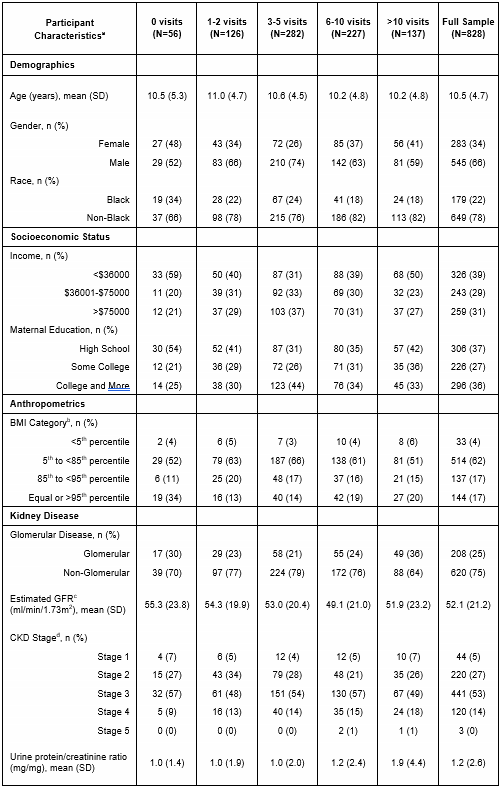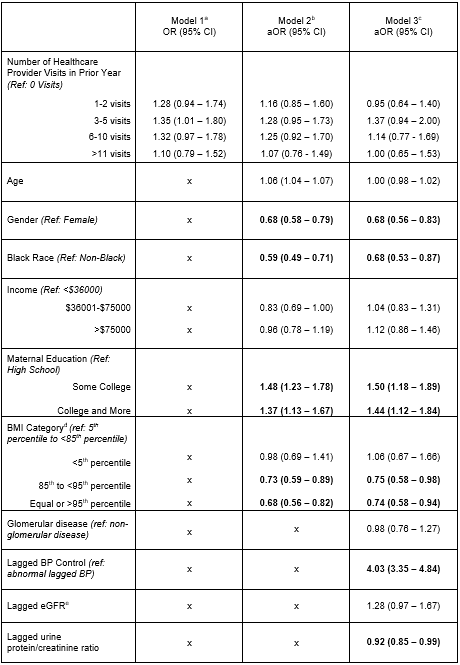Nephrology
Session: Nephrology 4
23 - Interval Healthcare Provider Contact and Blood Pressure Control in Children with Chronic Kidney Disease and Hypertension
Sunday, May 5, 2024
3:30 PM - 6:00 PM ET
Poster Number: 23
Publication Number: 23.1910
Publication Number: 23.1910

John H. Hammond, MD (he/him/his)
Pediatric Nephrology Fellow
Johns Hopkins Children's Center
Baltimore, Maryland, United States
Presenting Author(s)
Background: Prior studies in the CKiD (Chronic Kidney Disease in Children) cohort have shown persistent poor blood pressure (BP) control among children and adolescents with hypertension. This poor BP control may be related to access to health care between yearly CKiD study visits.
Objective: Determine the association of interval healthcare provider contact between CKiD study visits with BP control among children with both chronic kidney disease (CKD) and hypertension.
Design/Methods: This was a cross-sectional analysis of longitudinal data obtained in the CKiD cohort study. Participants entered the analysis at the first study visit when they either reported a history of hypertension on a medical history questionnaire or were found to have an elevated BP. Elevated BP was defined as a mean casual BP ≥90th percentile for age/sex/height for those younger than 13 years, and >=120/80 for those 13 years and older. Interval health care provider contact was defined by self-report as number of outpatient healthcare provider visits in the year prior and categorized as in the Tables. Multivariable logistic regression explored the association between number of healthcare visits over the last year and BP control (defined as non-elevated BP at CKiD visit). We constructed unadjusted, minimally adjusted (including age, gender, race, income, maternal education, and body mass index (BMI)), and fully adjusted models (minimally adjusted model + glomerular diagnosis, lagged estimated glomerular filtration rate (eGFR), lagged urine protein/creatinine ratio, and lagged BP control).
Results: For this analysis, 828 unique participants with hypertension (75% of the total cohort) provided data from 3,312 visits. As of July 2023, 445/828 (54%) had their BP in control. Compared to those with 0 visits over the prior year, there was no significant difference in the odds of BP control in those with 1-2 visits, 3-5 visits, 6-10 visits, or >10 visits in our adjusted models. Of note, in our fully adjusted model, gender, race, maternal education, BMI, lagged urine protein/creatinine ratio, and lagged blood pressure covariates were all significantly associated with blood pressure control.
Conclusion(s): Overall, interval healthcare provider contact in between CKiD cohort visits is not associated with achieving BP control in children with CKD and hypertension. The significant association of race and maternal education with BP control warrants exploring the role of social determinants of health and identifying high risk groups for targeted interventions to improve BP control in CKD.


